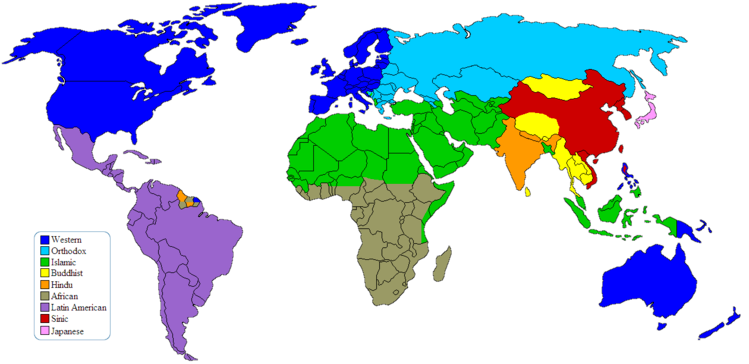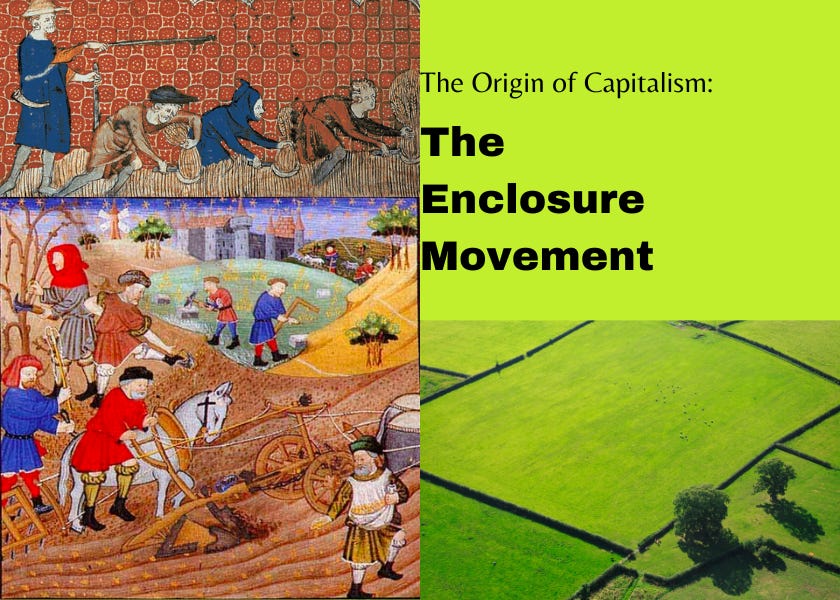There Is No "Western World."
But there is a capitalist one.
Hey folks, this article is for premium readers. If you’d like to support my work, please upgrade to a full subscription for just $15 a month. Your support ensures I can keep doing this.
In Solidarity, Joe
As a writer, there is no higher goal than having your work change the way people see the world. In June 1993, historian Samuel Huntington did just that. Writing for Foreign Affairs, Huntington penned The Clash of Civilizations?, which argued that future conflicts would be fought between cultures and motivated by ethnic and religious identity. The Cold War had recently ended, and people everywhere were wondering what would take its place. Huntington provided an answer
In his essay and the following book of the same name, Huntington divided the world into nine distinct “cultures.” Orthodox, Islamic, Buddhist, Hindu, African, Latin American, Sonic, Japanese, and, most famously, the West.
Huntington’s idea of a “Western World” caught like wildfire. Both from within and without Western nations, supporters and detractors used the term, cementing it in political discourse. Since then, the notion of Western culture has been used in everything from the manifestos of Osama bin Laden to the headlines of major newspapers, where it is still used today.

And though the idea of Western Civilization is accepted by many, it is incorrect. With Huntington stating that culture would be the source of conflict moving forward, many came to believe that the cause of all wars and conflicts would be between those who favored American-style capitalist quasi-democracy and those who did not. This belief was only magnified following 9/11 when many Americans chose to believe that the attack was because Muslims “hated our freedom” and other silly misconceptions. But though the idea of “The West” remains, the benefit of hindsight shows us that there is no Western world.
Why “The West” Doesn’t Exist
Pedantically speaking, there’s no such thing as “The West” because the United States is always both west and east of somewhere else. Additionally, Huntington included Australia in “the West,” and Israel to a small degree. (Huntington wrote this essay over 30 years ago. I’d wager if he wrote it today, he would agree Israel is part of what he deems “Western Civilization.”) Geographical nitpicking aside, simply calling these nations “Western” implies that the strings attaching them are due to their location, not their shared interests and history. While Huntington identified the Western World based on its common preference for capitalist liberal democracy, which he believed would clash with Islamic, Sinic (Chinese), and other cultures, he made the mistake of thinking that this was the result of Westerners’ religious and ethnic identities, not the influence of capital.
As capitalism originated in 12th century England through the enclosure movement, it spread across Europe, and eventually to North America and Australia through colonization. While the official government connections between Europe and its colonies were severed, the financial attachment remains to this day. It is the financial interest that established a common bond between the U.S., Canada, and Europe, not a cultural identity of shared heritage.
We can see this by examining how financial partnerships extend outside the Western world. In 2022, the United States was the largest goods importer in the world. Our top importing partners were: China ($536.3 billion), Mexico ($454.8 billion), Canada ($436.6 billion), Japan ($148.1 billion), and Germany ($146.6 billion). Right away we can see where Huntington’s view of cultural conflict falls short, as our two top importing partners are from supposedly “conflicting cultures.” The cultural view of the world also fails to account for how capital spreads to other regions where it blends and becomes the dominant force of their culture.





